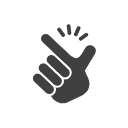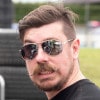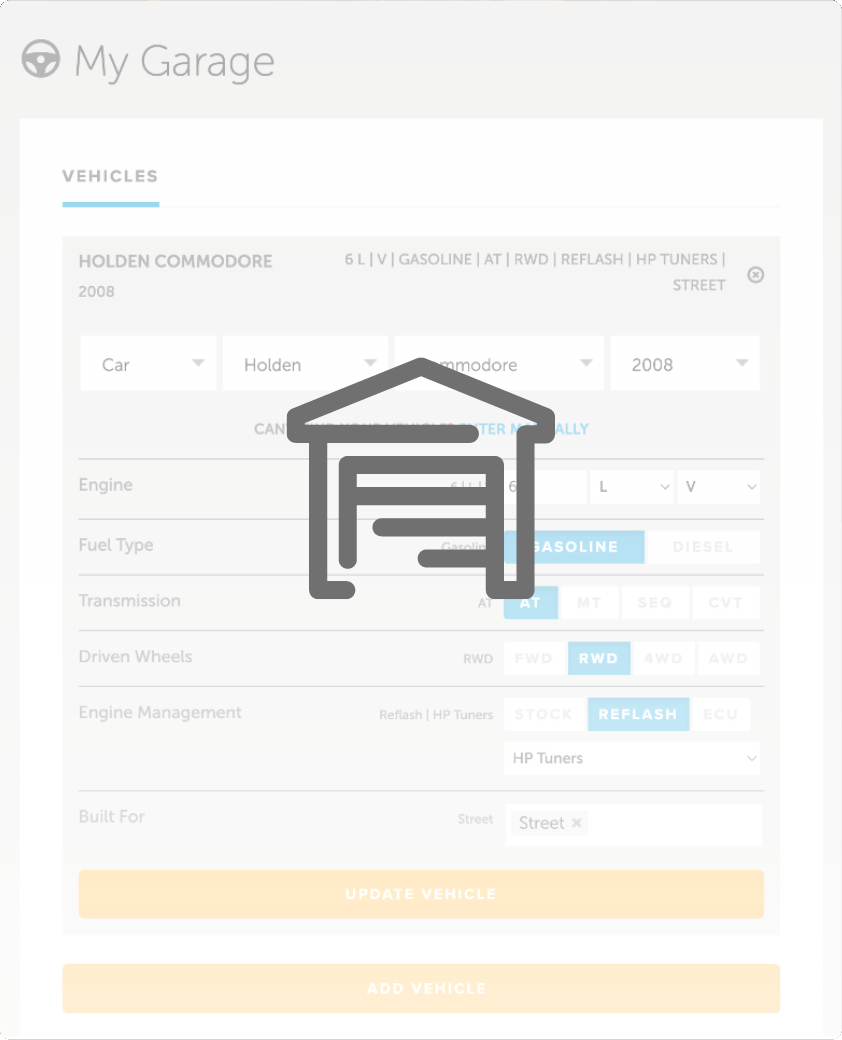| 00:00 |
The raw scan data needs some post processing before it's ready to work with in CAD.
|
| 00:05 |
So, what does this mean? With just a single scan, like our S14 upright, we'll likely need to clean up the data and ideally align it with a coordinate system before creating and exporting the mesh file to be used in CAD.
|
| 00:18 |
The scanner software will have a range of tools to make this possible, or we can use an intermediate software to do the job.
|
| 00:25 |
But regardless of which software is used, the idea is the same.
|
| 00:29 |
Most of these post processes are applied to the raw scan data prior to generating the mesh, but depending on the software we're using, some of these processes can also be applied to the mesh instead.
|
| 00:41 |
Let's continue with our suspension upright and the peel operating system as an example.
|
| 00:46 |
At this point we've completed the scan and we can move to the next stage, which is cleaning.
|
| 00:51 |
Cleaning involves removing unwanted data and what we need to understand here is that digital devices collecting data will also collect some amount of noise.
|
| 01:01 |
We won't dive any deeper than what's necessary here, but essentially noise data is additional, meaningless information that the device picks up and tries to include in the model.
|
| 01:11 |
The result is these small isolated sections of mesh elements that aren't actually in the real object.
|
| 01:18 |
They may also be part of the scan that we simply don't want to include, like the surface that we scanned on or anything picked up in the background.
|
| 01:25 |
In the uprights case we actually used a similar process in the previous module.
|
| 01:30 |
We used this remove background tool, which will make short work of any surface that the object is being scanned on.
|
| 01:36 |
Sometimes we just need to adjust the height slightly so we don't take away any of the model that we actually want to retain.
|
| 01:49 |
Then after hitting continue the background is removed.
|
| 01:53 |
We can then use this connected selection tool, which basically just selects everything connected to whatever triangle we first select and then we can use the keep only function, which essentially just deletes everything that's not selected.
|
| 02:10 |
The remove isolated patches tool can also do some of this automatically for us.
|
| 02:15 |
We just need to adjust the percentage setting to remove the right amount of isolated data.
|
| 02:21 |
Moving on we may also want to align multiple scans if we've taken scans of separate parts that fit together, different sides of the same part, like our upright for example, or even a section of a large part in one session and then the rest in another session.
|
| 02:37 |
To demonstrate this we can scan each side of the upright in two different scans.
|
| 02:58 |
So, after completing the scan and cleaning out the unwanted data, we can then import scans from another session if we'd already taken a scan of the other side or in our case we're going to select add new scan.
|
| 03:11 |
Then it's rinse and repeat, scanning the other side and cleaning.
|
| 03:26 |
And now we can see that we have our two scans in the bottom left hand corner of our screen and we can move on to the next stage, which is merging them together.
|
| 03:35 |
Since we use targets for this example, the software can use the align by target best fit to automatically align the scans based on the targets.
|
| 03:44 |
And had we not used targets, we could use the align by surface best fit, which also aligns the scans in an automatic method as well, based on the surface features of the two scans.
|
| 03:55 |
Alternatively, we could do a manual alignment and in this case we need to click three corresponding points on each scan and it's best if these are well divided and in three different planes.
|
| 04:12 |
Back to the align by target best fit function, if we click OK this will lock the scans together and then if we click the next arrow, it'll prompt us that once the merge is complete it'll delete the original scans and if we want to proceed, in which case we can click OK.
|
| 04:30 |
So, the next stage involves alignment with the workplace coordinate system.
|
| 04:34 |
As is, the scan will never be perfectly aligned with the coordinate system, simply because when we start scanning, the scanner relative to the object will never be perfectly in line and square.
|
| 04:46 |
Ideally though, we want the model to be aligned with the coordinate system when working in CAD, as this will make our lives much easier.
|
| 04:53 |
This is possible to do in our dedicated CAD software, however it can be best to do this prior to bringing the model into CAD, especially if we're just producing a scan for someone else and our work stops here.
|
| 05:06 |
For the most basic alignment, we can essentially just drag the scan into alignment with the coordinate system and this is perfect for roughly centering the scan in the workspace, but it's not very accurate.
|
| 05:18 |
A better method is what's referred to as the plane line point alignment, where we select three features to line up with our three default dimensions being X, Y and Z.
|
| 05:28 |
This is also commonly called the 3-2-1 method, as we choose three points to create a plane through these three points, two points for a line and of course a final point.
|
| 05:37 |
In the Peel operating system, we can use a similar approach and align the scan based on its geometry by extracting entities.
|
| 05:44 |
This is going to be an important topic that we're going to cover in much more detail soon.
|
| 05:49 |
For the alignment, it's a comparatively simple approach.
|
| 05:52 |
We're essentially just trying to lock down three dimensions.
|
| 05:56 |
If we select an axis for alignment, then we're prompted to select a cylindrical entity to align with that axis.
|
| 06:03 |
So, if we hold control on our keyboard and select the spindle, which is a perfect cylinder for this, then we just need to click flip to align that in the correct direction with our X axis and then we can lock in this dimension.
|
| 06:17 |
If we then select the corresponding YZ plane for the alignment shown in red, as you'd expect, we need to select a planar entity.
|
| 06:26 |
And the base of the spindle on this flat surface is perfect for that.
|
| 06:31 |
So, if we select that and then make sure we don't need to flip for the alignment, again, we can lock that in.
|
| 06:38 |
The third dimension will be a plane perpendicular to this and for that we can select a plane on the upper strut mounts, , which will be perfect for this and that will be aligned with that.
|
| 06:50 |
We don't need to flip that and we can hit lock and now all three dimensions are locked in and we have perfect alignment based on the geometric features of the scan.
|
| 07:00 |
We'll be covering a similar process for our S14 upright in much more detail in the reverse engineering section of the course.
|
| 07:07 |
When we cleaned the data we removed anything unwanted, but it's just as likely that we haven't managed to collect all the data we need and this is what the next stage, labelled improve in our software, is all about.
|
| 07:20 |
This is most critical on detailed parts of the object that are hard to capture.
|
| 07:24 |
The result will be holes in the model, which may or may not be an issue depending on our application.
|
| 07:30 |
For our suspension upright, any holes in the outer surface could do with being patched up, although in this case it doesn't look like we have any, just holes inside the actual mounting holes, which are simply hard to gather bits of data.
|
| 07:44 |
The software can fill these holes using the fill hole tool and just selecting the boundary of the hole that we want to fill.
|
| 07:50 |
Just a note here, when patching holes like this, the software is essentially approximating what it thinks the inside of that hole surface should look like.
|
| 07:59 |
It may be close or it might be completely wrong, and smaller holes will generally be more accurate than if we're filling larger holes.
|
| 08:07 |
The settings of this tool can be adjusted to use a curved surface or just a flat fill, depending on what we need.
|
| 08:13 |
We just don't want to fall into the trap of using this as a bandaid, as the results again are just an approximation and won't make up for bad data.
|
| 08:23 |
If we're missing large areas of data, then we really need to capture these with the scanner rather than using the fill holes tool.
|
| 08:30 |
Now, if we did want to send the mesh file straight to a 3D printer and avoid any CAD work, then we need to make sure the mesh is watertight and so there's no gaps in the surface, it forms a complete enclosure.
|
| 08:43 |
The Peel operating system has this watertight remesh function, as does a lot of other software to automatically do that for us.
|
| 08:52 |
After clicking OK, we can also use some other features to smooth the surface of the mesh, remove spikes and things like that.
|
| 09:00 |
We can also modify the refinement of the mesh using this decimate function, which simply reduces the number of elements in the mesh for a smaller file size.
|
| 09:09 |
If we've captured colour texture during the scanning process, it's often hidden during post processing to reduce the load on the computer.
|
| 09:17 |
So, the next step, we'd use the colourise function to reapply that texture to the scan.
|
| 09:23 |
In our case, we don't need to do that as we didn't capture the colour texture.
|
| 09:27 |
Finally, when we're happy with the scan, it's time to move onto the next stage, which is exporting the scan as a mesh to a place on our computer.
|
| 09:35 |
So, generally, this is going to be an STL file, but if we did capture the colour texture and want to retain it, then we need to choose an OBJ or PLY file.
|
| 09:47 |
The alternative shown in this Peel software is the option to export the mesh directly into PeelCAD, which is Peel's dedicated reverse engineering software.
|
| 09:57 |
In this software, we have a very similar set of tools to use to modify the mesh and also extract entities, which is something be diving into in much more detail in the reverse engineering section of the course.
|
| 10:09 |
There are many more post processing tools and techniques available depending on the software we're using, specifically around surface modelling, which can also be done in our CAD software.
|
| 10:20 |
In this module, we've covered the post processing functions that are most commonly used and critical.
|
| 10:26 |
But there are other options out there that'll be able to achieve the same results depending on the software.
|
| 10:32 |
So, before moving on, let's recap the key topics.
|
| 10:35 |
The scanning software allows us to apply post processing to the scan data to create a quality mesh file.
|
| 10:42 |
This involves cleaning functions like removing noise, unwanted data, and filling holes as well as aligning the data with the origin or merging multiple scans.
|
| 10:52 |
Any colour texture captured can also be applied and finally the mesh can be created, refined and exported in a format that we require.
|





